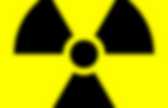

High-resolution photos of Fukushima Daiichi. 01 Apr 2011 These high-resolution aerial photographs of the damaged Fukushima Daiichi nuclear power plant were taken on March 20 and 24, 2011 by a small unmanned drone operated by Air Photo Service, a company based in Niigata prefecture. Click [Enlarge] under each image for the full version. [Enlarge] Unit 3 (left) and Unit 4 (right) - March 24 [Enlarge] Left to right: Unit 4, Unit 3, Unit 2 and Unit 1 - March 20 [Enlarge] Unit 3 - March 24 [Enlarge] Unit 4 - March 24 [Enlarge] Unit 4 (left) and Unit 3 (right) - March 20 [Enlarge] Top to bottom: Unit 1, Unit 2, Unit 3 and Unit 4 - March 20 [Enlarge] Unit 4 (left) and Unit 3 (right) - March 24 [Enlarge] Unit 3 - March 24 [Enlarge] Left to right: Unit 3, Unit 2 and Unit 1 - March 20 [Enlarge] Left to right: Unit 1 (partially visible), Unit 2, Unit 3 and Unit 4 [Via: Cryptome]
Mutant Butterflies Link Fukushima Meltdown to Human Disease.
Fukushima Crisis Awakes After Reactor Heats Up Mysteriously. The human cost of the Fukushima meltdowns, one year later. Well, I guess this will all serve as a spur for Japan to invest even more money in alternatives like geothermal, wind and solar—which actually they've been heavily investing in for many decades now. I don't think Japan will ever be able to totally abandon nuclear energy despite the current outcrys in the country to do just that. Given the long history of earthquakes and vulcanism in Japan, there really aren't that many totally stable places to build new reactors. New reactors must be designed to expect some kind of earthquake related disaster to happen at some point. But really, the long term thing to learn here?
That's really expensive and given human shortsightedness, I doubt anything will be done about it. I shudder to think how us flighty, shallow Usans are going to just let this one slide. Concerns Grow About Spent Fuel Rods at Fukushima Daiichi. Radioactive Release at Fukushima Plant Was Underestimated. Japan Quake Threat Scientist Was Dismissed. Dismissed as a “nobody” by Japan’s nuclear industry, seismologist Katsuhiko Ishibashi spent two decades watching his predictions of disaster come true: First in the 1995 Kobe earthquake and then at Fukushima.
He says the government still doesn’t get it. The 67-year-old scientist recalled in an interview how his boss marched him to the Construction Ministry to apologize for writing a 1994 book suggesting Japan’s building codes put its cities at risk. Five months later, thousands were killed when a quake devastated Kobe city. The book, “A Seismologist Warns,” became a bestseller. That didn’t stop Haruki Madarame, now head of Japan’s Nuclear Safety Commission, from dismissing Ishibashi as an amateur when he warned of a “nuclear earthquake disaster,” a phrase the Kobe University professor coined in 1997. “What was missing -- and is still missing -- is a recognition of the danger,” Ishibashi said, seated in a dining room stacked with books in his house in a Kobe suburb. New Fault Lines. Japan Disaster Spawns Geiger Counter for Citizens | Safecast Kickstarter Project. Japan's nuclear meltdown in the aftermath of the March 11, 2011 earthquake inspired the creation of a grassroots radiation sensor network and a homemade Geiger counter for ordinary citizens.
The DIY Geiger counter has since gone on presale for a limited time before the more expensive official version hits store shelves. Anyone can buy the half-price $400 version of the new Geiger counter through the Kickstarter project organized by the global "Safecast" project — the grassroots organization founded in the wake of Japan's disaster in March 2011. The smartphone-size device is being advertised as a "Swiss army knife of Geiger counters," because it can measure beta and alpha particles as well as gamma radiation. Most Geiger counters can only measure far-traveling gamma radiation, but the detection of beta and alpha particles allows people to pinpoint local contaminated surfaces. The limited-edition Geiger counter made by Safecast is designed for use by ordinary citizens.CREDIT: Safecast.